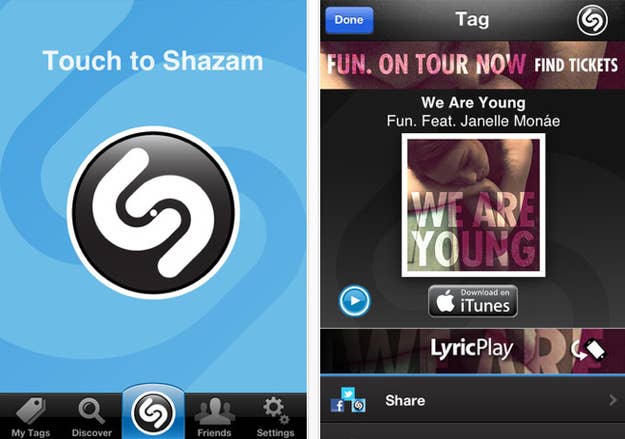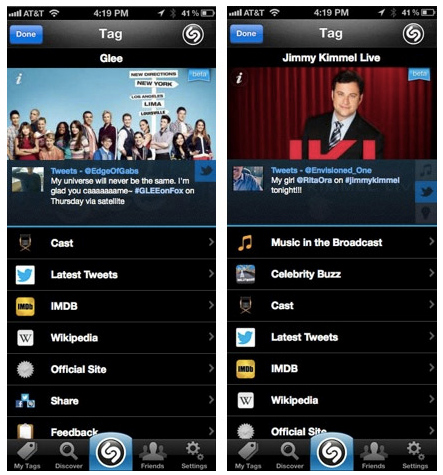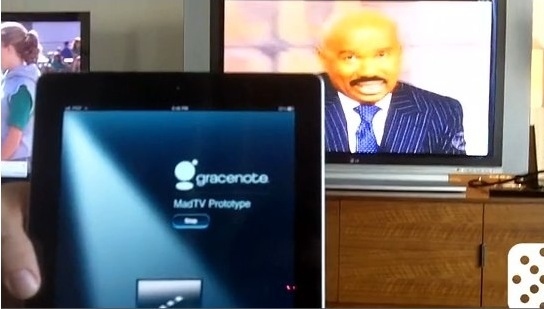So you know Shazam, right? The app that tells you what you're listening to?

Well, it recently started popping up IN YOUR FACE in TV ads like this. The idea is that you Shazam your TV and get product info, or sometimes a free song:
View this video on YouTube
It's hard to use and usually flies by way too fast. Also, like, WHY? Nobody wants to work for their TV ads:

But you could use it during the Super Bowl for ads AND stats, which made a little more sense:

Anyway, Shazam announced this week that you can now tag any TV show. It's not really about telling you what you're watching so much as giving you extra info – IMDB, Wikipedia, scores, etc:

This is what tech people call a "second screen," and, like any content-related new thing, you can expect it to have ads. But it's still just an app. HOWEVER:

I spoke with another company doing this kind of work last year, called GraceNote. (You might recognize that name from iTunes — they supply track names for CDs there and elsewhere.)
Here's the CEO talking to GigaOm at about the same time:
View this video on YouTube
One thing he told me that's not in this video is how he thought this kind of tech would eventually get used: that the ultimate goal was to build this kind of tech right into the operating system of your phone or tablet, which would change the second screen experience from an active one — you have to deliberately open an app — to a more passive one, where you get pushed updates without really asking.
The tablet or phone would just listen, waiting until it recognizes something. Then an update would appear on yours screen, sort of like an email or Twitter push notification. So of like the ones Shazam already does:

This isn't going to happen soon, and neither Apple nor Google has suggested they'll build passive listening into their software or hardware. It also seems a little creepy now — but so many new tech ideas do.
Nonetheless, this is basically what the future of TVs, tablets and phones looks like: Content on both screens, always. And where there's content, there are probably ads.


